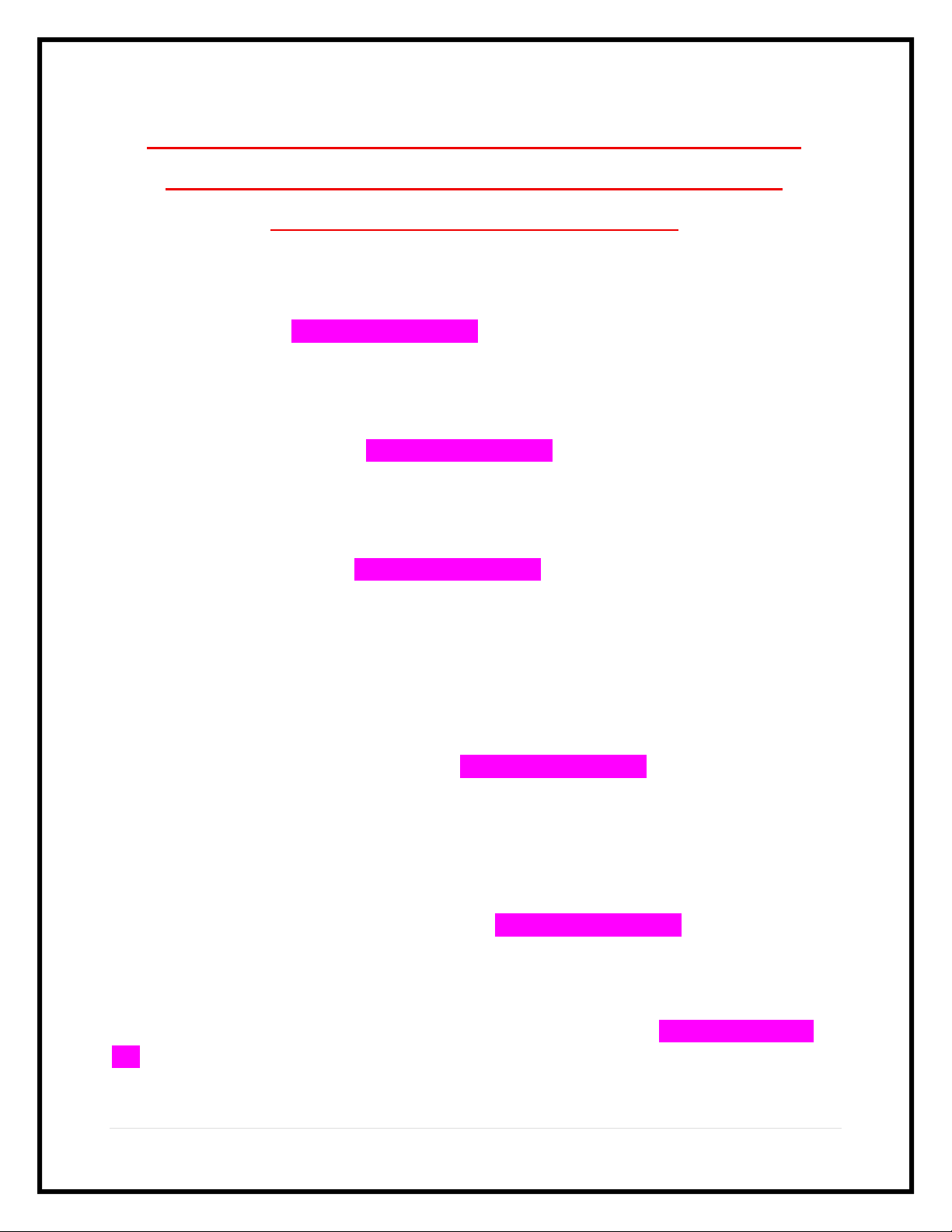
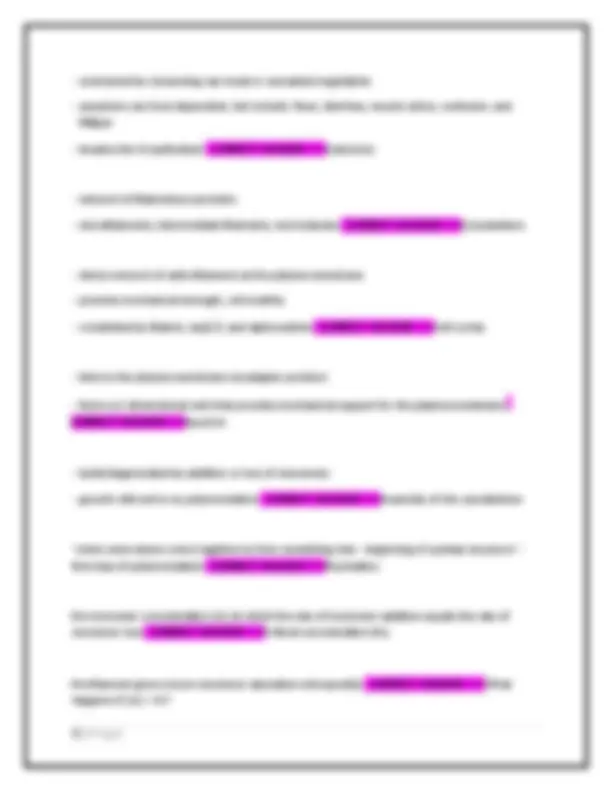
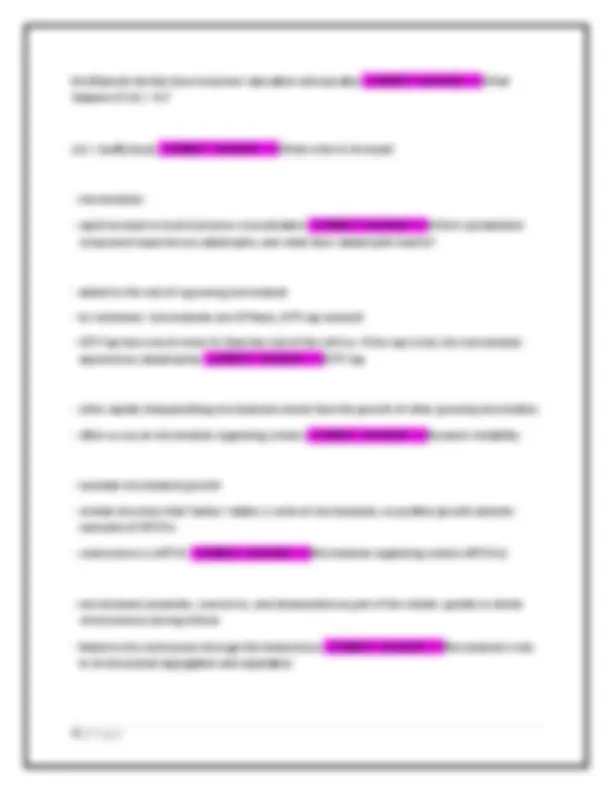
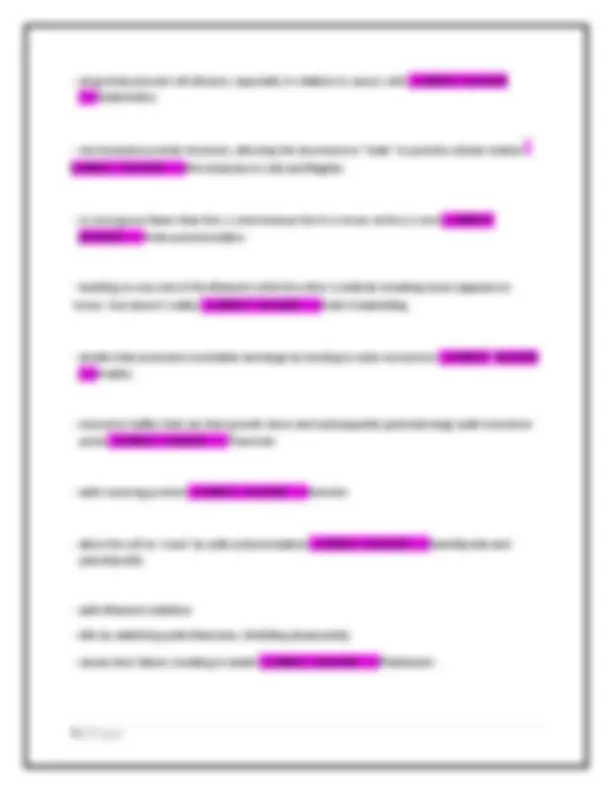
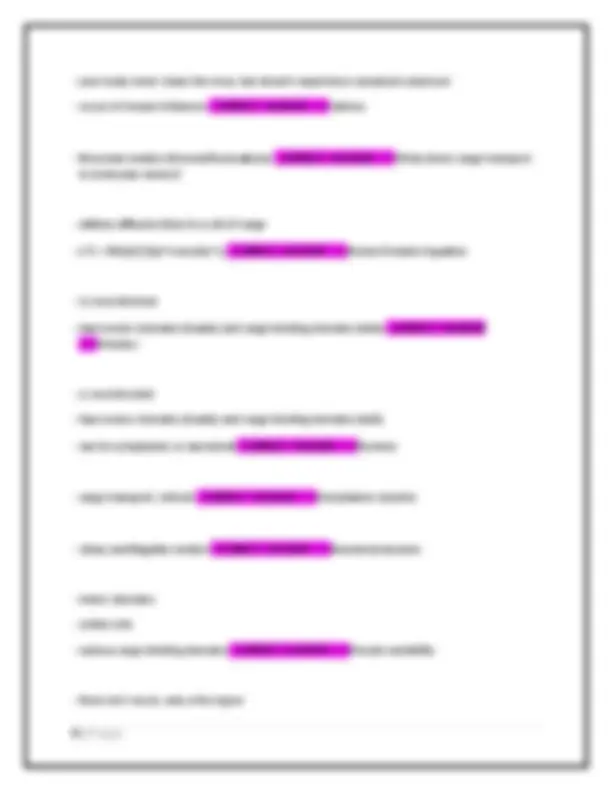

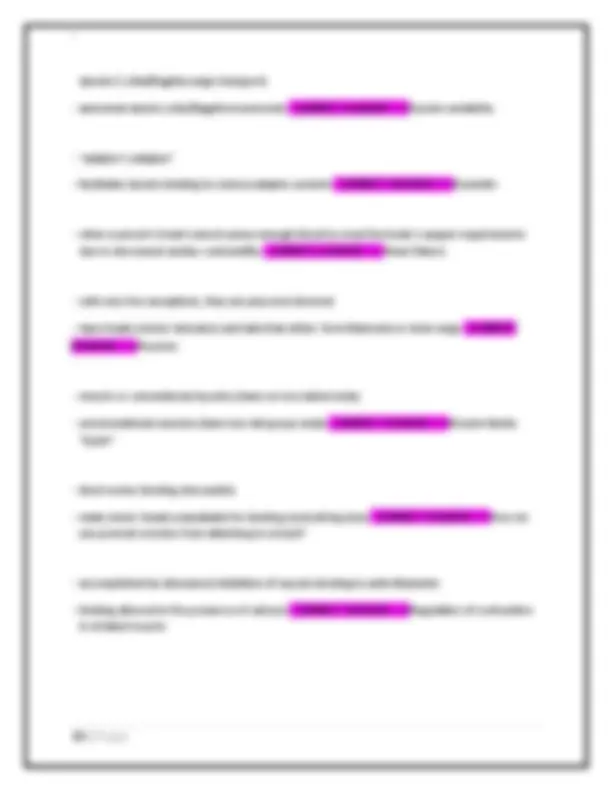

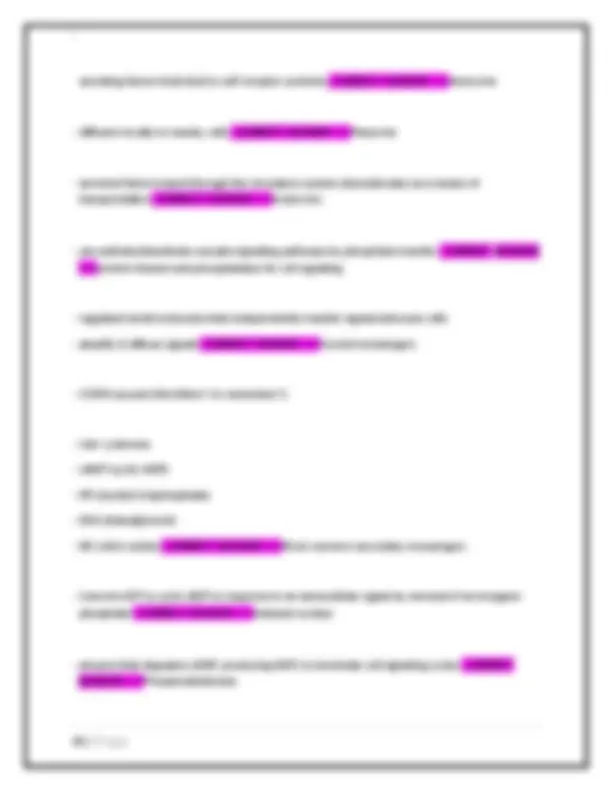
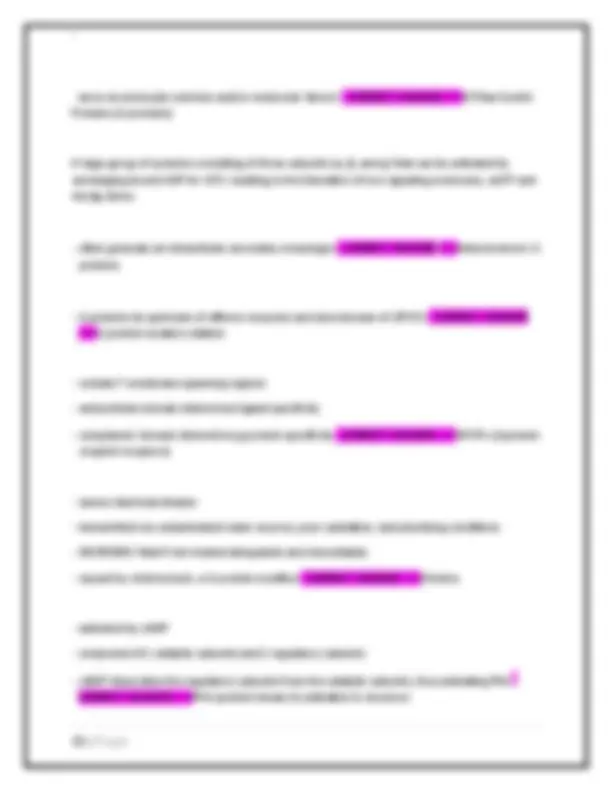
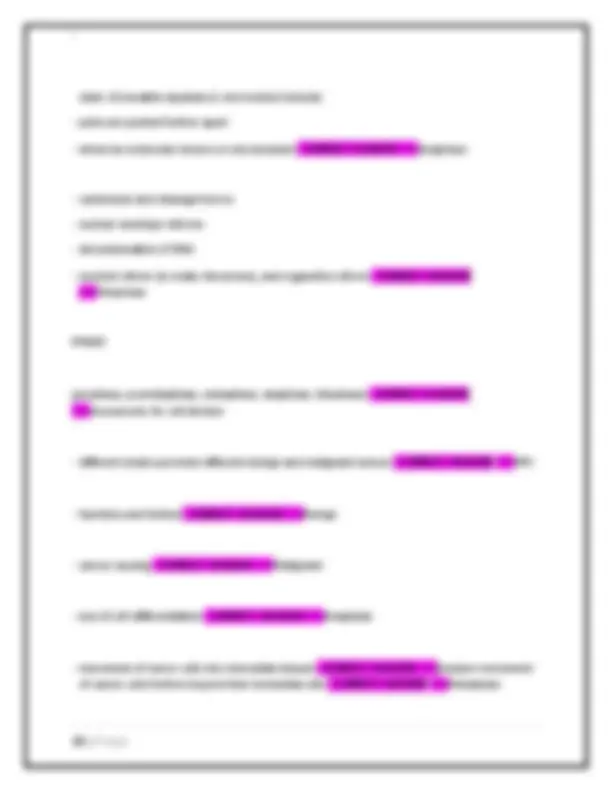
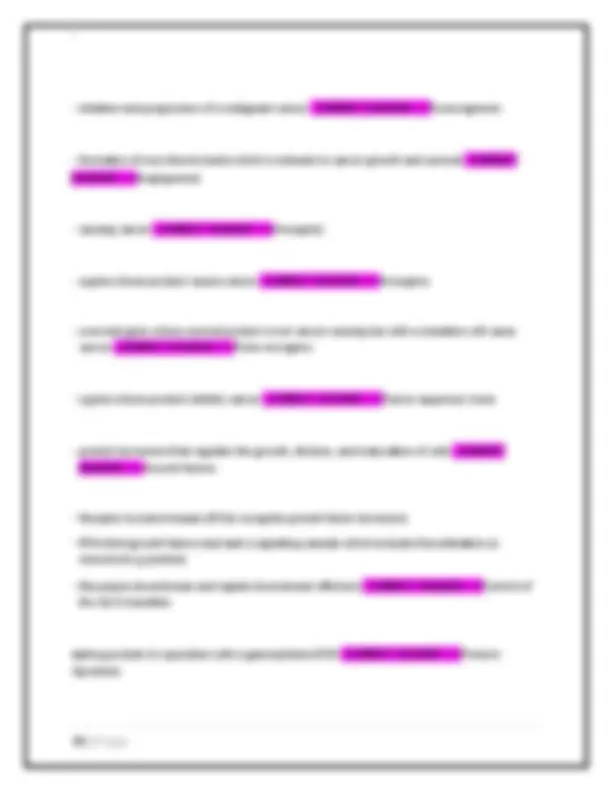
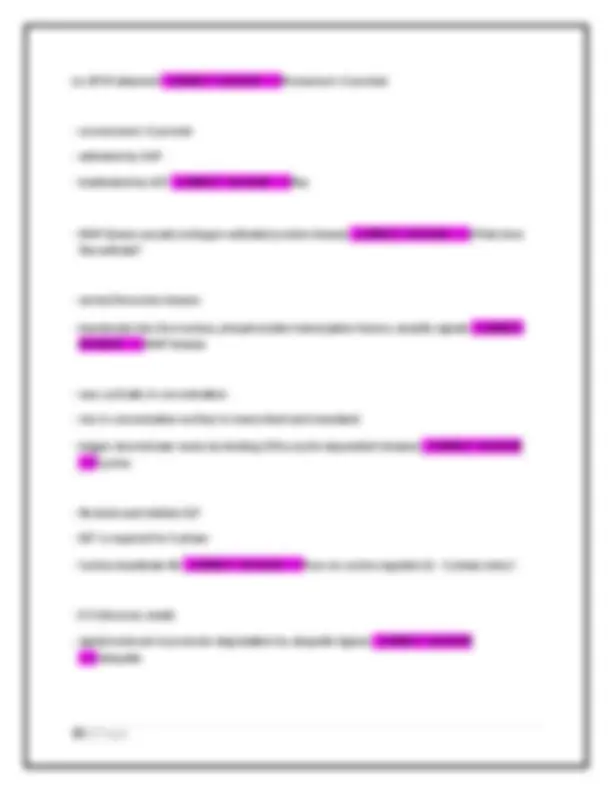
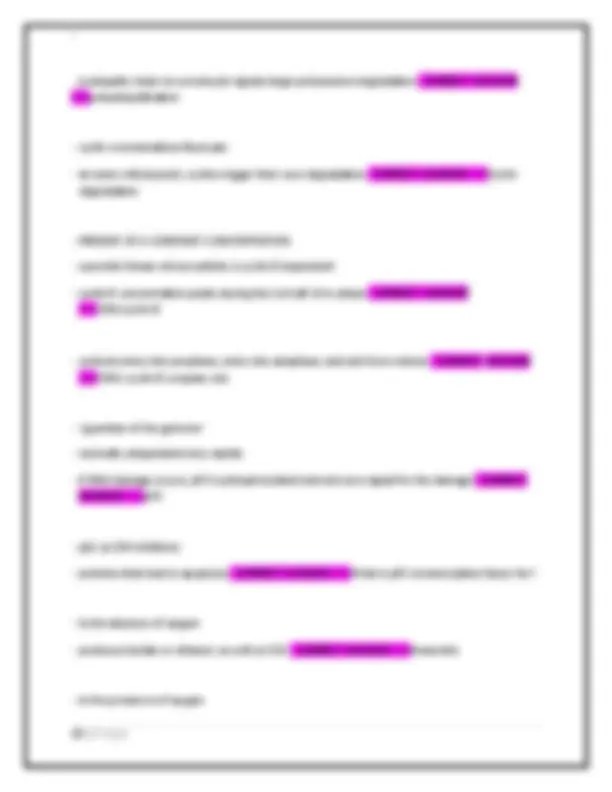
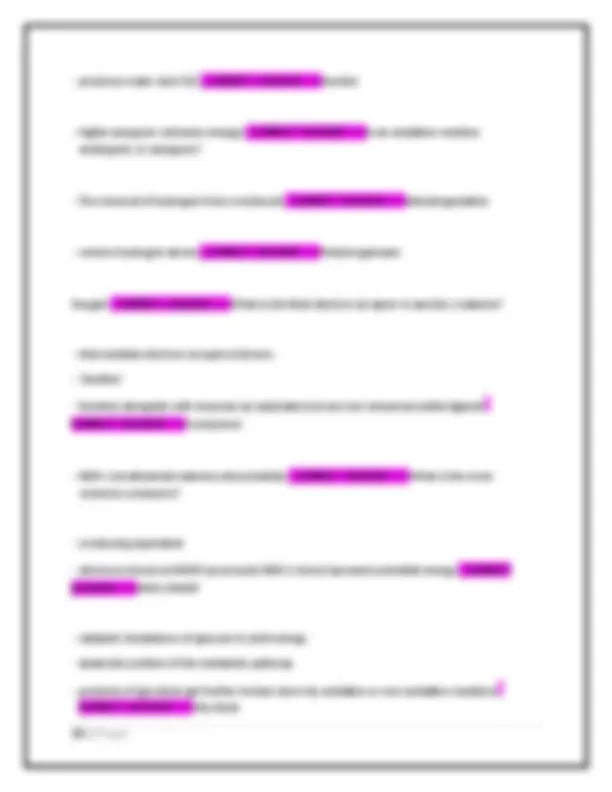
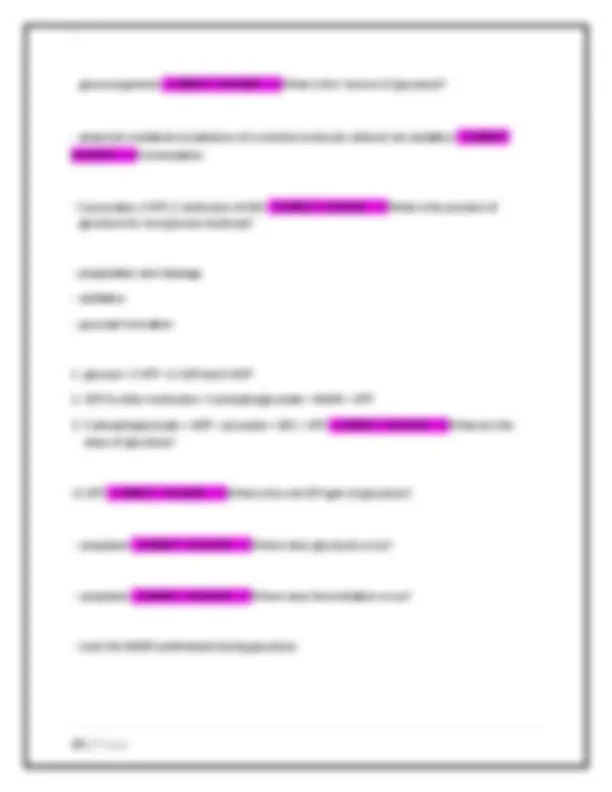
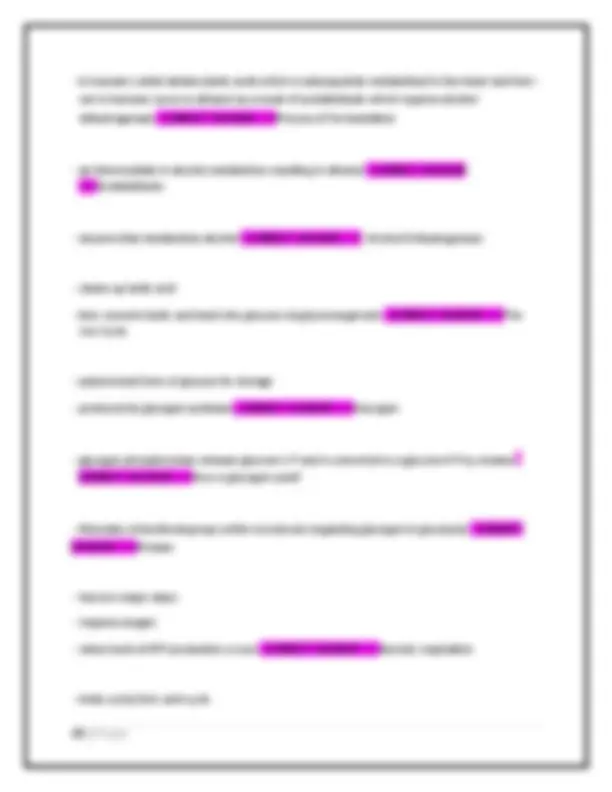
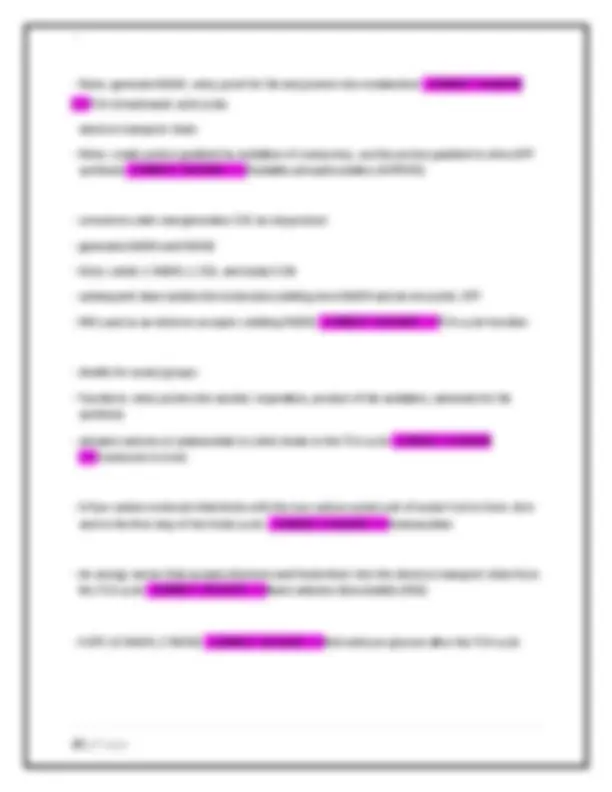
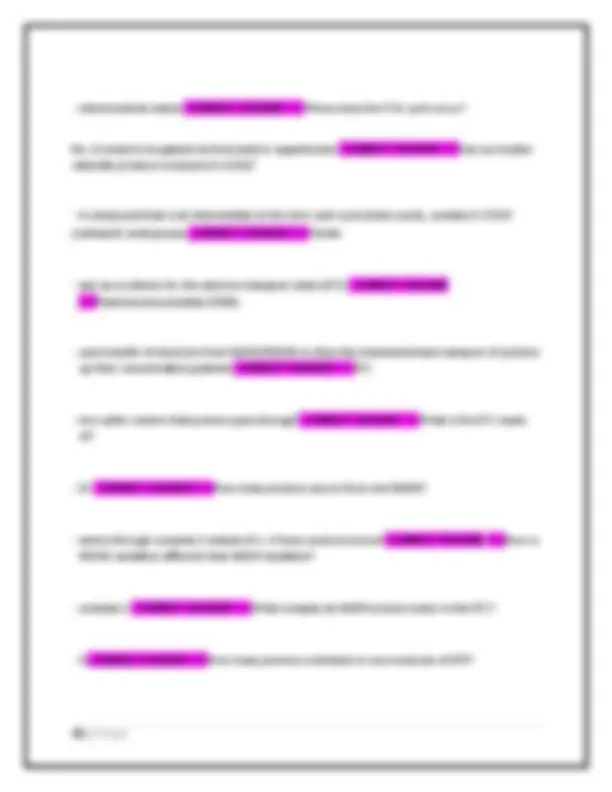
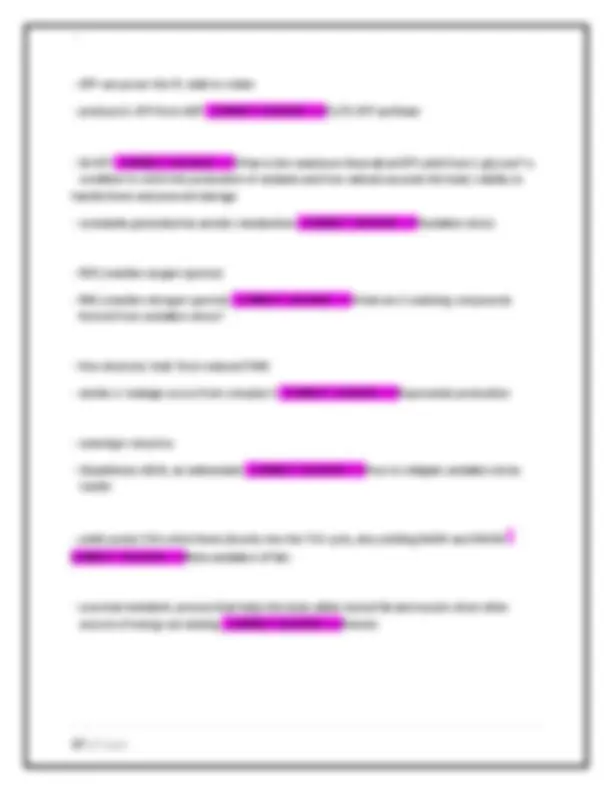
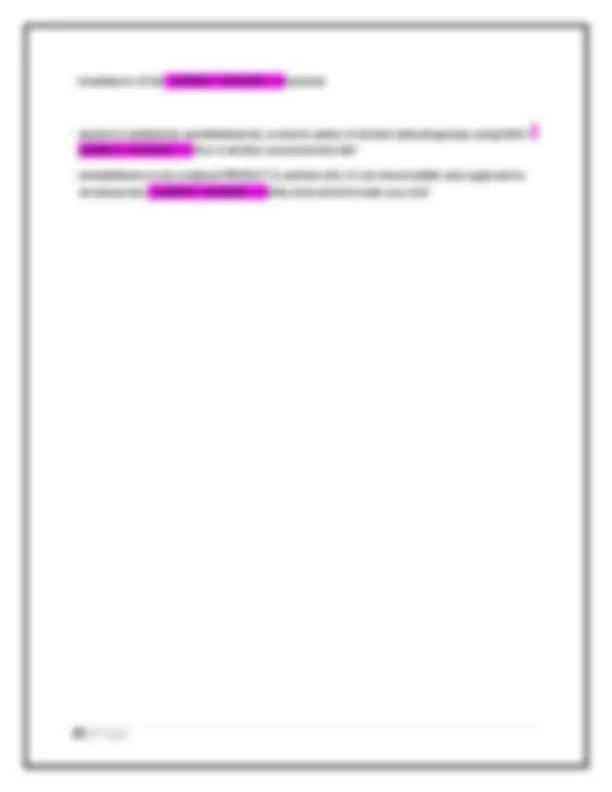


Study with the several resources on Docsity

Earn points by helping other students or get them with a premium plan


Prepare for your exams
Study with the several resources on Docsity

Earn points to download
Earn points by helping other students or get them with a premium plan
Community
Ask the community for help and clear up your study doubts
Discover the best universities in your country according to Docsity users
Free resources
Download our free guides on studying techniques, anxiety management strategies, and thesis advice from Docsity tutors
UVA BME2104 CELL & MOLECULAR BIOLOGY FINAL EXAM WITH COMPLETE QUESTIONS & CORRECT ANSWERS RATED & A+ GRADED
Typology: Exams
1 / 28

This page cannot be seen from the preview
Don't miss anything!





















** In microtubules, does growth occur at the + or - end and why?
** Muscle myosin
the filament shrinks (less monomer saturation entropically) - CORRECT ANSWER >>> What happens if [m] < Kc? [m] = k(off)/k(on) - CORRECT ANSWER >>> What is the Kc formula?
** Profilin
time spent generating a force - CORRECT ANSWER >>> duty ratio how quickly a molecular motor uses ATP - CORRECT ANSWER >>> ATPase rate/cycle time
dynein 2 (cilia/flagella cargo transport)
** Regulation of contraction in smooth muscle
secreting factors that bind to self receptor proteins - CORRECT ANSWER >>> Autocrine
PLC (phospholipase C) cleaves phosphotidylinositol into DAG and IP3 **- CORRECT ANSWER
** Lipids as second messengers ► Ligand binding at GPCR activates a heterotrimeric G protein, which activates PLC ► PLC cleaves the phosphoinositide PIP2 to yield DAG and IP ► IP3 binds the IP3 receptor on the smooth ER to release Ca2+ into the cytosol ► Ca2+ activates MLCK, which activates myosin contraction in smooth muscle cells ► Ca2+ and DAG together activate conventional PKCs at the plasma membrane, inhibiting smooth muscle contraction ► Ca2+ is eventually pumped back into the ER ► DAG is phosphorylated by DAG kinase to yield phosphatidic acid (phospholipid precursor) - CORRECT ANSWER >>> The DAG-IP3 in the PLC/PKC pathway ► NO· is diffuses to its target ► NO· is a guanylyl cyclase (GC) agonist ► Cyclic guanosine monophosphate (cGMP) is generated ► cGMP activates protein kinase G (PKG) ► PKG phosphorylates substrates, including proteins that control cytosolic calcium concentrations, lowering [Ca2+]cytosol and inhibiting smooth muscle contraction.
it ADP-ribosylates the alpha subunit of the g-protein (responsible for activating adenylyl cyclase)
** Metaphase
no GPCR attached - CORRECT ANSWER >>> Monomeric G-protein